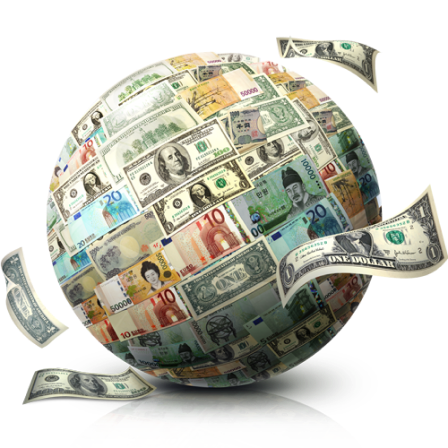
WHAT IS THE FOREX MARKET?
The foreign exchange (forex) market enables various participants—including banks, corporations, and individual traders—to purchase, sell, or exchange currencies for purposes such as hedging against financial risk or engaging in speculation. As the largest financial market globally, the forex market comprises a diverse range of entities, including central banks, commercial institutions, investment firms, hedge funds, retail forex brokers, and private investors.
- The forex market provides a platform for participants—such as banks, investment funds, and individual traders—to engage in the buying, selling, or exchanging of currencies, whether for speculative gains or to hedge against financial risks.
- Operating continuously 24 hours a day for five and a half days each week, it facilitates the exchange of trillions of dollars daily.
- While forex trading presents the potential for significant returns, it also carries considerable risk.
- The market consists of two primary segments: the interbank market and the over-the-counter (OTC) market.
- Many forex trading accounts can be started with a deposit as low as $100.
KEY TAKEAWAYS
// A Closer Look at the Forex Market
The forex market does not operate through a centralized exchange but rather functions as a decentralized global network, consisting of computers and brokers spread across different regions. In addition to facilitating trades, forex brokers often act as market makers, setting their own bid and ask prices for currency pairs—prices which may not always reflect the most favorable rates available in the broader market.
The structure of the forex market is divided into two primary segments: the interbank market and the over-the-counter (OTC) market. The interbank market involves major financial institutions trading currencies for purposes such as hedging, managing balance sheets, or executing transactions on behalf of clients. In contrast, the OTC market is where individuals conduct currency trades using online platforms provided by brokers.
Operating continuously from Monday morning in Asia to Friday afternoon in New York, the forex market remains open 24 hours a day throughout the trading week. It begins on Sunday at 5:00 p.m. Eastern Standard Time (EST) and closes on Friday at 4:00 p.m. EST.
This round-the-clock nature distinguishes forex from other financial markets—such as equities, bonds, and commodities—which typically cease operations in the late afternoon EST. Nevertheless, there are exceptions; certain emerging market currencies may have designated downtime during the trading day.
FOREX AVAILABLE ON OUR PLATFORM
Name
Symbol
Lot Size
Price
Change
Load...
Load...
Load...
Load...
Load....